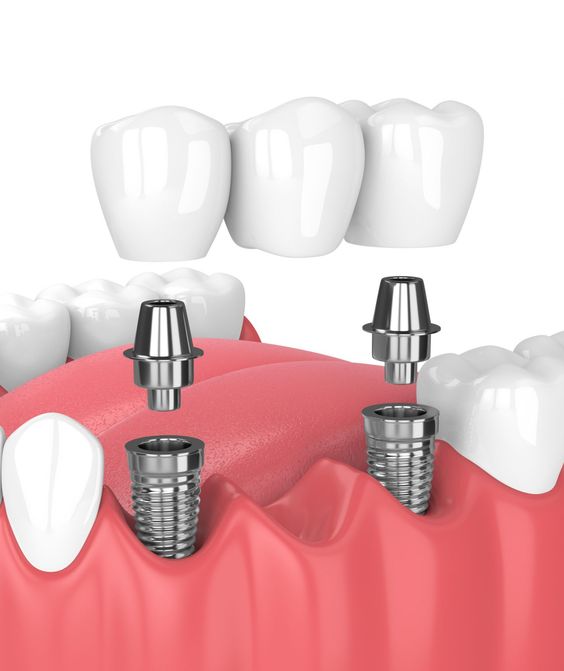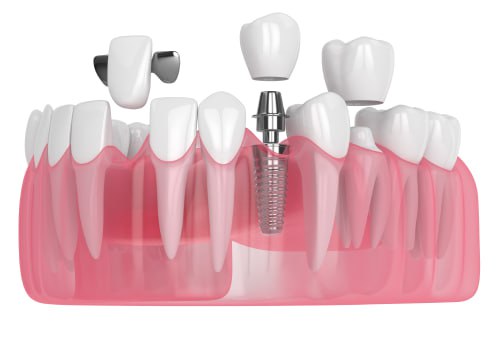The premature loss of one or more teeth can certainly make you feel uncomfortable when chewing or speaking. There are several types of solutions to remedy this situation. We can talk about the “application of dental implants” as a type of treatment that behaves most like a natural tooth structure and adapts best to the oral tissues.
Scientifically it is possible to insert 4 units of dental implants for each jaw and make fixed prosthesis with screws (All on four) or 6 units (All on Six) to restore the natural functions.
A dental implant is a surgical component that connects to the jawbone or skull bone to support a dental prosthesis such as a crown, bridge, denture, facial prosthesis, or to serve as an orthodontic anchor.
The basis for modern dental implants is a biological process called osseointegration, in which materials such as titanium form an intimate bond with the bone. The implant is first placed so that it is likely to osseointegrate, then a dental prosthesis is added.
Sometimes due to lack of bone in the mouth your dentist decides to do bone graft which is the process of injecting bone powder around your implant in order your dental implant be fixed into your jaw (The same as keeping constructional iron fixed by concrete). In addition if you lost bone in your upper jaw you can need sinus lift and membrane in order to have enough space to place the implants and also to avoid the sinus infections.


